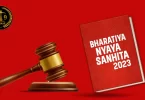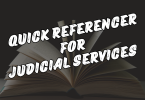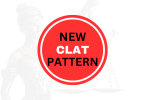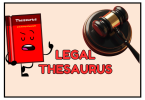Spell out your ideas concretely
Once upon a time, a distinguished looking surgeon on television took a snort of white powder-let’s presume it was cocaine-just prior to beginning the first incision of a surgery. He had to lift his cloth face mask to get the stuff, no less. This anti-drug commercial from the 1980s was followed in short order by another ad featuring an egg cracked open onto a frying pan with the infamous tagline, “This is your brain on drugs.”
The oft-mocked “War on Drugs” did impact me (although I’d hate to admit it in certain circles). I was eleven years old and proudly wore my “Just Say No” t-shirt to school and-dare I admit it-even school dances. While in my junior year, I did succumb to the occasional dalliance with alcohol, I am proud and relieved to be able to write that it never blossomed into a habit, and I never tried harder drugs. It did, however, help me to better understand the challenges faced by our youth as they grow up in a world where messages about drugs and alcohol so widely vary.
I remain certain that the education of our youth concerning the risks involved in drug use is the most effective way to decrease the demand for drugs in the future. Nancy Reagan and I remain in full agreement on that point. In fact, if I had my way, those antiquated commercials would make a comeback for a newer and tech savvy generation as a warning about their inherent dangers.
Today, as a drug counselor and social worker, I find I am able to quickly identify individuals with drug dependency problems with very little interaction. The fact that I see people daily who are on one form of drug or another allows me insight into the physical manifestations abusers exhibit. I am more than willing to point it out to them and offer them help. Admittedly, they do not usually accept my offer. But I believe that the more people in my position, with my experience, are willing to make contact with addicts before they have committed a crime or overdosed, the better the chances that a seed might germinate and grow whereby they will eventually seek out help on their own.
Asking my colleagues, doctors and other medical professionals, and reformed addicts to make a pact to make contact with every addict they pass, especially ones that are out of control due to drugs, or even dangerous, might seem unwise. The reasons one would opt out of such a proposition are manifold: 1) Fear of the unknown. 2) Fear of the quiet dangers of approaching an addict. 3) Discomfort due to the fact that nobody likes or respects a buttinsky. 4) The lack of an immediate response after making the effort.
However, I decided to take it upon myself to move forward with this plan.
Slowly I began to suggest it to my colleagues and co-workers. I insisted that the more of us who made contact with these addicts in our midst, the more addicts we might keep out of the system altogether.
For some time I made my case in talks before classrooms of social workers and drug counselors, in AA and NA meetings, and at conferences for medical professionals. There was no way to quantify my success, but my passion continued to grow. Eventually I realized that I wanted a more measurable strategy. I began to investigate legal action groups to help those already trapped inside a failing system. Eventually I got involved with programs like The Addicts Law Project in Chicago and other organizations working to help people victimized by addiction.
I believe that individuals struggling with substance abuse are the ones that didn’t get the right messages at the times in their lives when those messages might have set them on a different path. Each of us could easily have become them. And they might have become us. They still could.
I still believe that reaching out to addicts before they hit the system is the best way to help them change their lives. The grassroots-contact movement I started continues to grow to this day. I can’t proclaim to have invented a visual as powerful as an egg in a frying pan symbolizing a brain, a coked up surgeon, or even a middle-school meet and greet with t-shirts, but it exists as my own active movement toward change. Now it is time for me to take it to the next level.
JD MISSION REVIEW
Overall Lesson
Spell out concretely how the story you are telling in your essay has led you to law.
First Impression
This beginning of this essay is neither amazing nor notably problematic. I am not sure why he is invoking the anti-drug campaigns of the 1980s, but I am interested in reading the candidate’s story.
Strengths
The candidate has undertaken quite an interesting and powerful project-one that is ambitious, unusual, and socially minded (three attributes that are often the hallmark of top candidates). He has a rich background with which to craft a winning personal statement, and in several paragraphs, he is well on his way. These two paragraphs in particular capture his determination, resilience, and willingness to change course based on outcomes:
However, I decided to take it upon myself to move forward with this plan. Slowly I began to suggest it to my colleagues and co-workers. I insisted that the more of us who made contact with these addicts in our midst, the more addicts we might keep out of the system altogether.
For some time I made my case in talks before classrooms of social workers and drug counselors, in AA and NA meetings, and at conferences for medical professionals. There was no way to quantify my success, but my passion continued to grow. Eventually I realized that I wanted a more measurable strategy. I began to investigate legal action groups to help those already trapped inside a failing system. Eventually I got involved with programs like The Addicts Law Project in Chicago and other organizations working to help people victimized by addiction.
Ultimately, however, he does not quite get there; his essay still needs a fair amount of work.
Weaknesses
How did the candidate’s “occasional dalliance” with alcohol help him “understand the challenges faced by our youth as they grow up in a world where messages about drugs and alcohol so widely vary”? All I know is that he watched anti-drug ads as a kid, was affected by them, and then himself engaged in underage drinking. What compelled him to drink, and how did doing so lead him to discover the importance of educating youth about the dangers of drugs and alcohol (as he claims it did)?
Likewise, I do not understand the basis for his assertion about the effectiveness of anti-drug ads. He states clearly that they affected him, but what evidence does he have to prove that they also influenced others?
The paragraph about his interactions with others in his role as a drug counselor and social worker is interesting but not very effective. At first, the candidate seems to be talking about individuals he meets as part of his job, but he is not (and should therefore revise the section to avoid creating this confusion). He is referring to people he encounters outside of the clinic. I find this fascinating does he actually approach people on the street whom he believes are addicts? If so, he should share one of those stories. Forget Nancy Reagan!
Finally, what does The Addicts Law Project do? How can the law help addicts, and what did he learn from his work with the legal organizations he mentions? This essay exhibits an all-too-common mistake that applicants make in early drafts of personal statements-referring to a captivating idea but failing to articulate what that idea actually is. I want to know more about this project to better understand why this candidate wants to attend law school in the first place.
Final Assessment
I would cut the reference to his drinking in high school; it does not matter, nor does it add any value to the essay. He could retain the reference to the 1980s drug ads, but only if he can better relate them to his overall point-in particular, by providing actual evidence of their effectiveness. And I would advise him to add more specific details about what legal recourse addicts currently have and how he hopes to use the law to further his mission.








